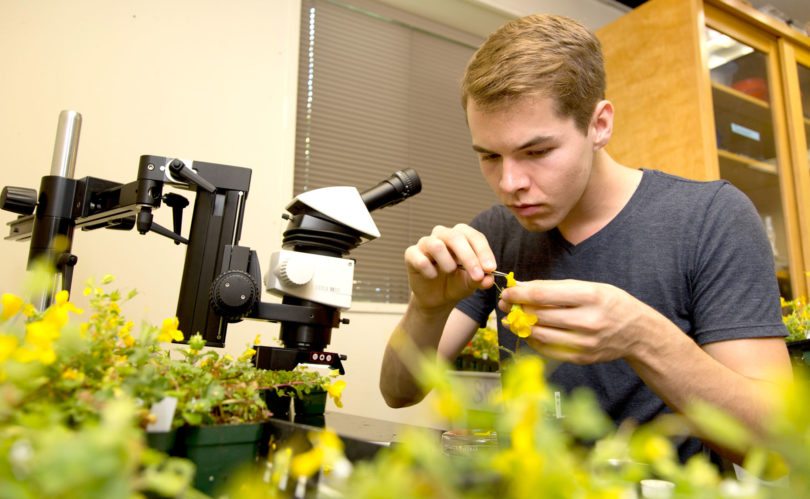Fall enrollment numbers for courses in the Center for Undergraduate Research Opportunities are the largest in the history of the program. This semester, almost 20 percent more students are requesting CURO courses for individualized research opportunities.
A record 234 UGA students are participating in fall semester research projects. This continues the trend in increased CURO participation. In the 2012-2013 academic year, 449 students took 536 CURO courses—an all-time high and the first year with more than 500 total courses offered. The number of non-Honors Program students participating has more than doubled from last fall, from 28 to 69 students.
The CURO courses offer undergraduates the opportunity to do one-on-one research with faculty mentors. Courses range from research projects on the effects of music on male aggression to range shifts in alligator populations due to changes in sea level.
“The increased participation in CURO we are seeing is very exciting,” said David Williams, associate provost and director of the Honors Program. “UGA is one of only a handful of institutions in the country that offers the opportunity to conduct undergraduate research for a full four years in any academic discipline. This gives students extensive and sustained contact with faculty mentors, who are able to open doors for students throughout their undergraduate experience.”
More students are working on independent research projects, more students are getting one-on-one time with faculty earlier in their careers and more students are exposed to research.
“This leads to high levels of student achievement,” Williams said. “More thorough letters of recommendations from faculty mentors to graduate and professional schools, more students making informed decisions about careers in research and more research coming out of the University of Georgia.”
CURO has gateway seminars, research courses, summer fellowships and presentation and publishing opportunities. Students conduct guided research in labs, write papers and even work up to running their own projects and writing a thesis on their findings-all typically at a level equivalent to what a graduate student might do.
CURO students are writing computer code, studying Chinese investments in U.S. companies, analyzing water samples from the North Pacific Ocean, conducting interviews with immigrant populations and tagging songbirds.
There’s not only more student interest, but more faculty interest in mentoring undergraduates. This fall, 172 faculty members are teaching CURO courses.
Mugdha Joshi, a sophomore studying cellular biology, describes CURO as a “one-on-one relationship where the faculty member is invested in your growth.
“It’s just cultivating this cool relationship with faculty members and this cool culture on campus that glorifies doing undergraduate research,” she said.
The increase in CURO participants is due partially because of the program’s expansion to include all students—not just Honors Program students.
“Increasingly, students know before they even arrive on campus that they want to conduct undergraduate research, and they understand that they can do that here with full support through CURO,” Williams said.
Meg Babcock-Adams is a junior chemistry and marine sciences major who came to UGA to do research with the CURO program. Babcock-Adams already has taken two CURO courses and said it’s confirmed her interest in becoming a researcher in marine science.
Many students aren’t doing just one CURO project and moving on. They’re continuing their research projects for multiple semesters-almost half of fall CURO students had a previous semester of research.
Austin Garner is a senior genetics major with an anthropology minor from Douglasville who’s on the CURO thesis path. He’s taken two CURO courses and is planning to write his thesis in the spring.
“CURO is great for the fact that it offers an in to labs for people who didn’t previously have the opportunity,” Garner said. “I am definitely able to learn more (in the CURO course) than I would have learned doing general grunt work in a lab or sitting in a lecture hall. Running your own research forces you to learn and apply what you have learned to real immediate problems.”
Garner runs his own project investigating genetics in Mimulus flowers and hybrid crosses. Along with his faculty adviser, Andrea Sweigart, an assistant professor in genetics, he plans to publish the final results of the work and present at the 2014 CURO Symposium, 2013 Southeastern Population Ecology and Evolutionary Genetics Conference this month and the National 2014 Evolution conference.
“CURO also has acted as a great steppingstone for my future career in scientific research, elevating me to a position in which I know that I am competitive for entry into a doctoral program,” he said.








